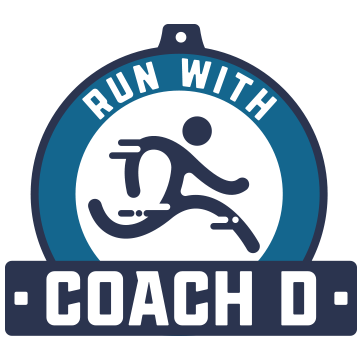Train smarter, not longer
Many runners believe that increasing mileage is the key to speed, but that’s not always true. (key words not always, as with anything “it depends” plays a huge role in deciding which training plan/style works for you). This is not a short cut to “get fast, fast!” Like anything, get quality reps and time are the best indicators of performance. In this post our coaches explore the key components to training for speed without running more miles. If you're looking to improve your pace without adding more miles, focusing on quality workouts, strength training, and better running mechanics can help you become a faster, more efficient runner.
Speed work is one of the most effective ways to increase your pace while keeping your mileage consistent. Interval training, which consists of short bursts of high-intensity running followed by recovery jogs, can significantly improve your speed, endurance, and running economy.
A simple workout to try is 4-6 repetitions of 400 meters at 5K pace with equal recovery jogs.
Tempo runs are another great option. Running at a comfortably hard pace for 20-30 minutes—about what you could sustain in a one-hour race—helps improve your ability to hold faster paces for longer.
Adding strides at the end of an easy run can also help with speed development. These short, fast accelerations (20-second bursts at 85-90% effort) reinforce good form and help your body get used to running faster without excessive fatigue.
Finally, incorporating hill sprints, such as 6-8 all-out sprints lasting about 10 seconds each, builds explosive strength and improves running efficiency.
Strength training plays a crucial role in speed development.
Plyometric exercises like box jumps, bounding, and squat jumps help build power, which translates to a stronger push-off and better running economy.
Single-leg exercises, such as split squats, step-ups, and single-leg deadlifts, improve stability and reduce imbalances, making running mechanics more efficient.
Core work is equally important; exercises like planks, Russian twists, and hanging leg raises enhance stability and power transfer, ensuring a more controlled and powerful stride.
In addition to speed workouts and strength training, refining running mechanics can make a significant difference in pace. Aiming for a cadence of 170-180 steps per minute reduces ground contact time and improves efficiency. To increase cadence, runners can use a metronome or count their steps for 30 seconds and multiply by two. (Cadence is not a one number fits all, the goal is to assess what your current cadence is and then find a range that works for you)
Posture is another key component—keeping the shoulders relaxed, back tall, and head in line with the spine helps prevent wasted energy. Efficient arm movement also contributes to better running form. Keeping elbows bent at 90 degrees and swinging them forward and back, rather than across the body, promotes smoother movement.
Lastly, adjusting stride length can prevent inefficiency and reduce injury risk. Overstriding can slow runners down, so focusing on powerful but natural strides with a midfoot landing can lead to better performance.
A well-balanced weekly training plan can help runners improve speed without increasing mileage. A sample plan might include an easy run with strides on Monday, strength training on Tuesday, interval work on Wednesday, another easy run with core and mobility work on Thursday, hill sprints on Friday, a tempo run on Saturday, and a rest or active recovery day on Sunday. This would be designed to be done in an off season where speed is the focus (compared to a half or marathon training cycle) Remember, we get fast before we go far.
To maximize speed gains, runners should focus on quality over quantity. Instead of simply adding miles, they should make the miles they run count by incorporating intentional speed and strength training. Recovery is just as important as the workouts themselves, so getting adequate sleep, proper nutrition, and allowing rest days will help the body adapt and grow stronger. Listening to the body is essential, as overtraining can lead to burnout or injury. If fatigue becomes overwhelming, adjusting the training plan is key. Most importantly, staying consistent with speed work and strength training over time will lead to noticeable improvements.
Getting faster doesn’t require increasing mileage. By focusing on structured speed workouts, strength training, and efficient running mechanics, runners can improve their pace while maintaining a manageable training load. Small, consistent changes lead to big results. For those looking for a more personalized approach, customized coaching can help optimize training and ensure progress toward running goals. Learn more about coaching here.

